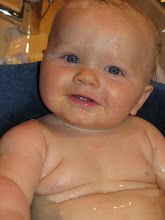As you can see in the image above, the eastern edge of Nebraska is included in the Agricultural Core region. Nebraska's two largest cities, Lincoln and Omaha, are part of this region. This reflects one of the key differences between the Agricultural Core and the Great Plains Region..the Agricultural Core is more densley populated. "More rain falls and the air is humid throughout the growing season, spawning different vegetation. The blending of these characteristics gives the eastern plains a higher carrying capacity, and, coupled to the benefits accruing from numerous natural transportation routes, has lent it the power to become the nation's agricultural core."
Corn-based farming schemes prevail in the agriculturalcore, although initially European settlers grew wheat.

Nebraska cornfield
Climate
"For anyone whose aesthetic requirements transcend those of a cornstalk, the climate is pretty darned miserable...It's no place to have to live, unless you consider making a living the principal purpose of living." --Geographer J.F. Hart
I think this quote is hilarious...I am not quite sure that I agree with it, but it is hilarious nonetheless. Most of the region receives around 30 inches of precipitation annually. It is crucial to the agriculture of the region that this rainfall is dependable and rather unvariable. This region is less likely to suffer the droughts that more western portions of Nebraska receive.
This region has a continental climate, which means it has a wide average annual temperature change--the difference between the mean cold month and the mean warm month temperatures. In Illinois, the average January temperature is -4C and the average July temperature is 24C.
Nebraska is cold!!
But in the summer...Nebraska is warm and frequently stormy!





No comments:
Post a Comment